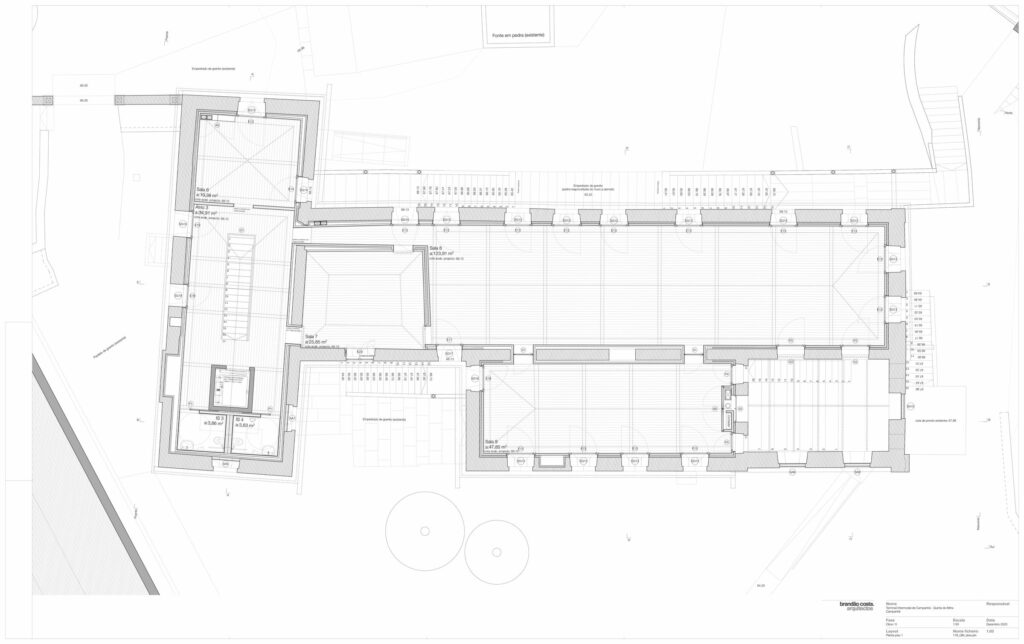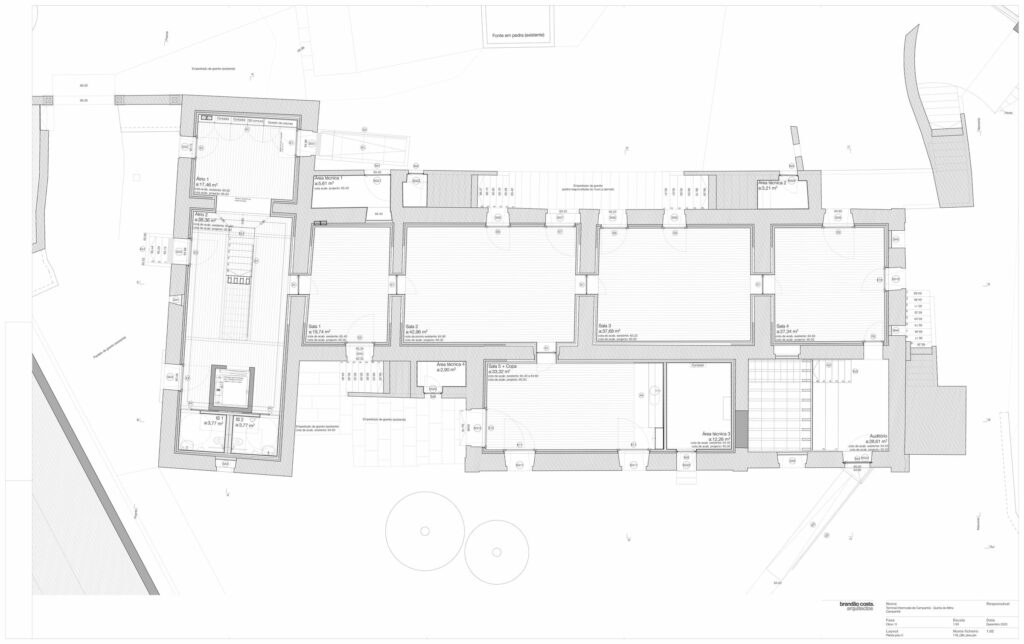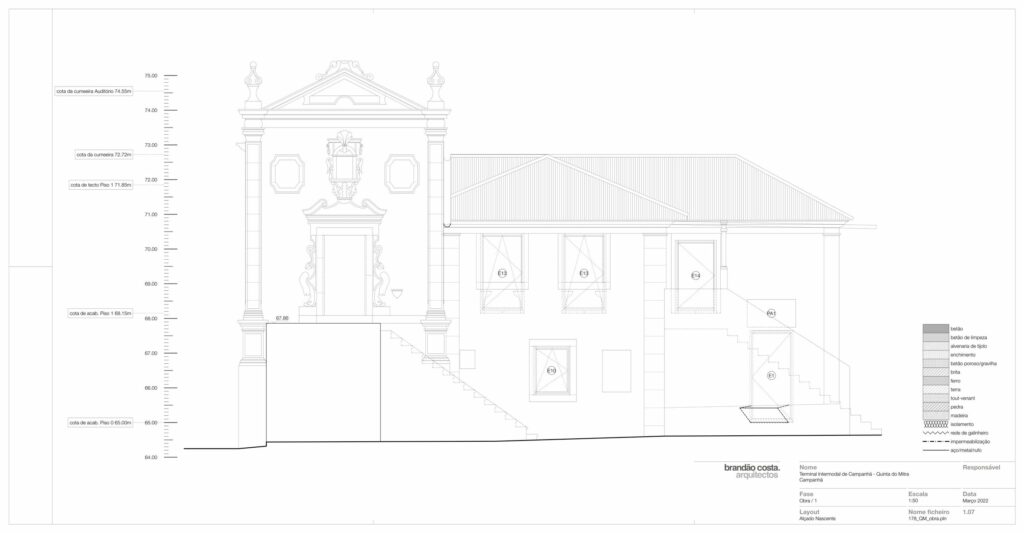Following the vision of Brandão Costa Arquitectos, Jury Member of the BigMat International Architecture Award 2023, Porto’s historic Quinta do Mitra has been revitalized. Originally a sprawling rural manor, the estate found itself increasingly hemmed in by Porto’s expanding infrastructure — the railway, ring road, and eventually, the Campanhã Intermodal Terminal (TIC) complex.
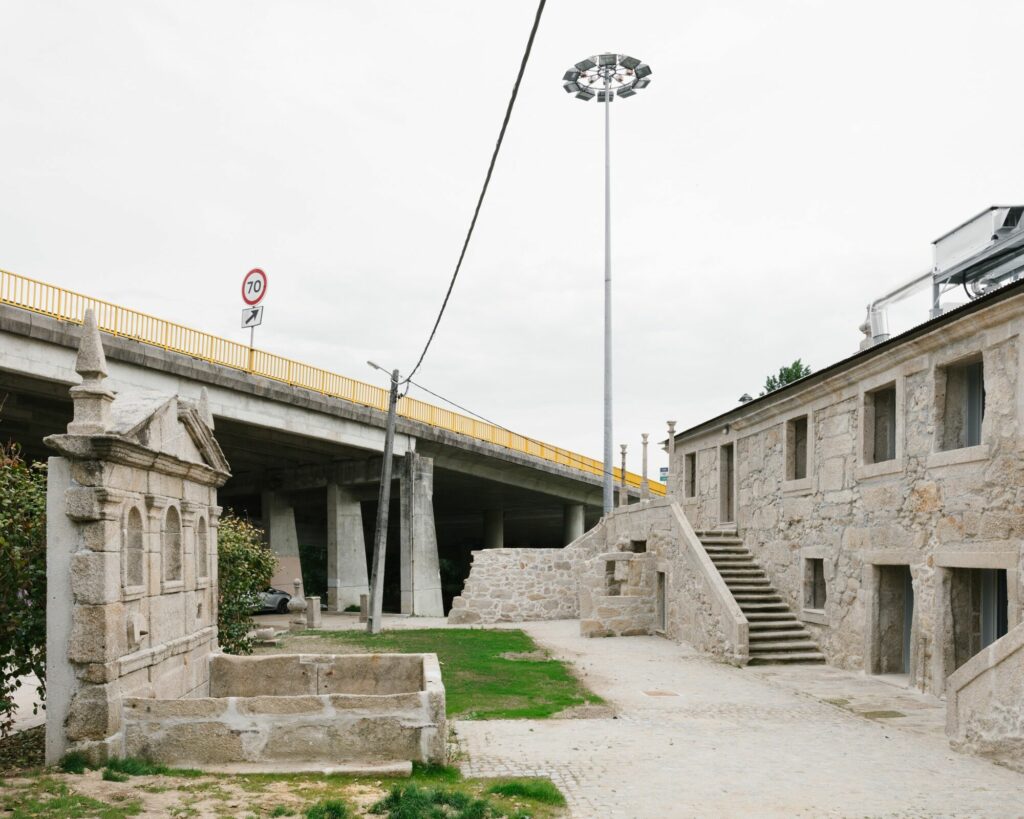
As the city grew, the once-grand stone structure was abandoned and fell into disrepair, its original purpose forgotten. Now, through its integration into the larger TIC initiative, the Quinta’s story of resilience continues, transforming a derelict site on the brink of collapse into a space with renewed purpose.
Its outdoor enclosure integrates and extends the public natural park which already involves all the intervention: from the South area, next to Ceres Factory, it runs along the entire TIC building, extends to the East to Rua do Bonjoia and ends, at the North end of the TIC complex, in the enclosure of the ancient Quinta do Mitra through a pedestrian bridge access.
Project data
Quinta do Mitra
Nuno Brandão Costa Arquitectos
Collaborators: Damião Franco, Rita Leite
Structural Engineer: António Adão da Fonseca, Renato Bastos |adf consultores|
Landscape Design: Rita Guedes
Hydraulic engineer: Miguel Vale |abprojectos|
Electrical engineer: Ricardo Campinho, Maria da Luz Santiago, Raul Serafim |rs associados|
Mechanical engineer: Miguel Alves, Raul Bessa |get|
Sinaletic design: Miguel Palmeiro |united by|
Photographer: Francisco Ascensão
The pre-existing building of the Quinta was, over time, successively involved by major mobility infrastructures (railway, VCI and now the TIC) and it was pouring in ruin, without functionality, and in an advanced state of structural degradation, close to collapse.
The TIC project envisaged its reconstruction in order to give it a new functionality and a new urban sense, as well as a role in the new functional and infrastructural context surrounding it.

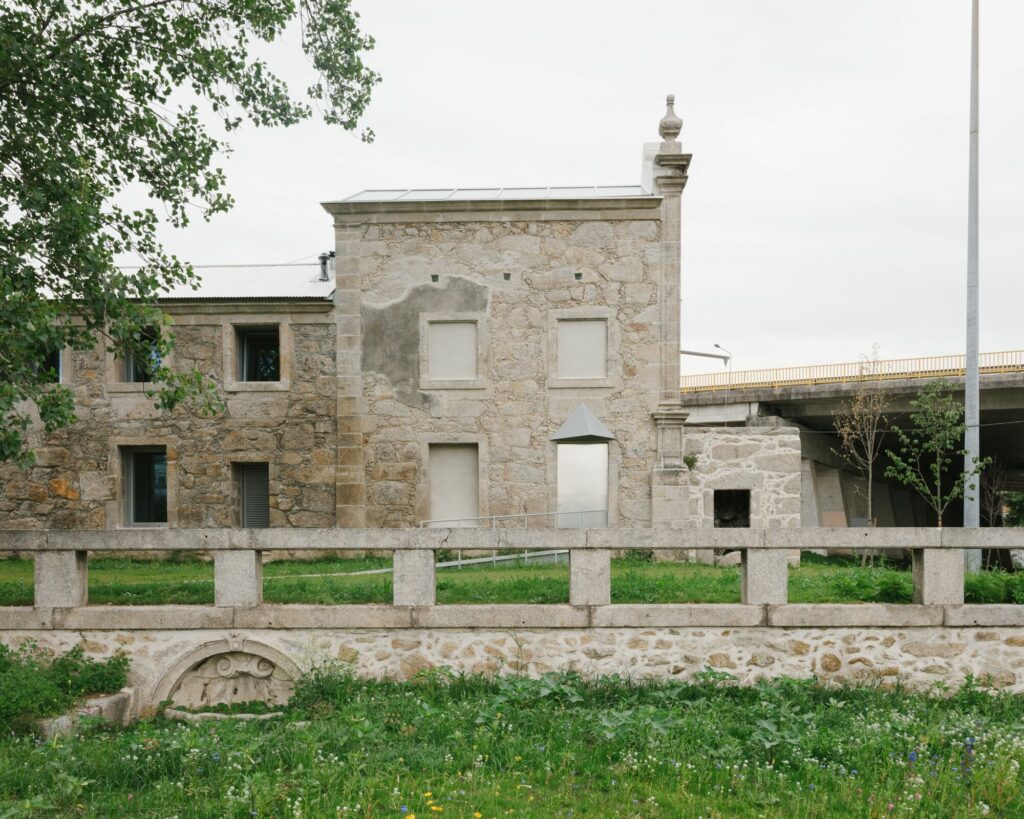
The architectural proposal focused on the integral preservation of the existing stone walls, maintaining its found condition of ruin appearance, reconfiguring its spaces for a new programmatic and multipurpose functionality, transforming it into a municipal services building and complying with the new spatial, constructive and infrastructural requirements.
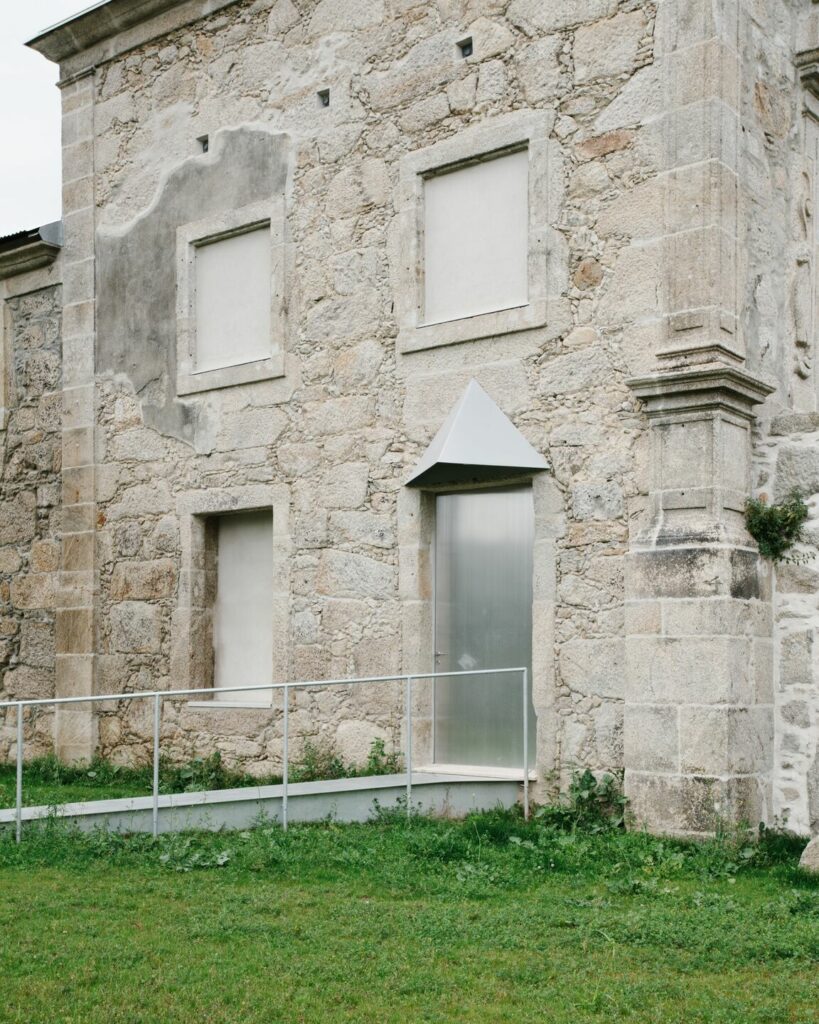

The architectural proposal morphologically translates the dialectic between the pre-existences, which were maintained original and preserved, and the new infrastructural and functional components added for its renewed functionality.
The excessive proximity of the building to the VCI viaduct, to the railway line and to the new TIC building has, over time, removed its original meaning. For this reason it didn’t seem logical to remake a conventional pastiche, since its function has also radically changed, rather the building should be given a new functional and urban meaning without losing its essence and stony nature.

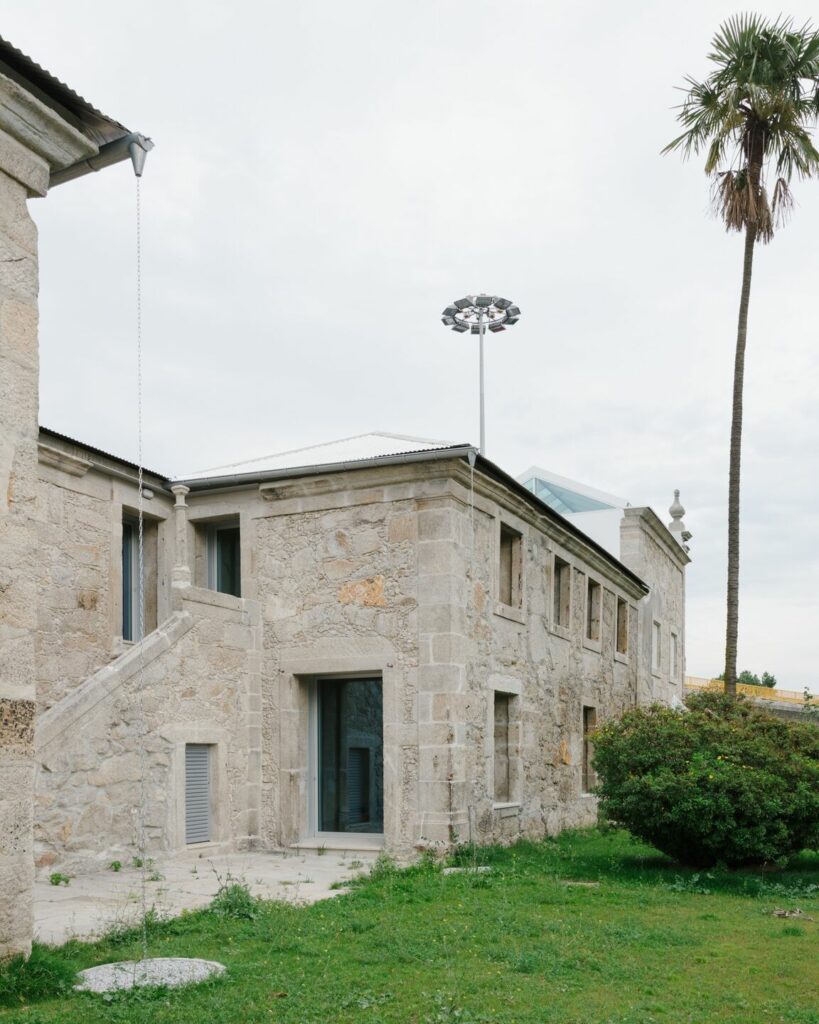

A strongly sustainable reconstruction was chosen (without the use of heavy concrete, mineral or ceramic construction elements) through very light and recyclable structural elements, namely wooden structures and light metal elements, which don’t jeopardise the structural safety of the existing walls. In this way its appearance, inside and outside, reveals the contemporary nature of the intervention, without giving up the memory of its original morphology, whose reading is maintained.
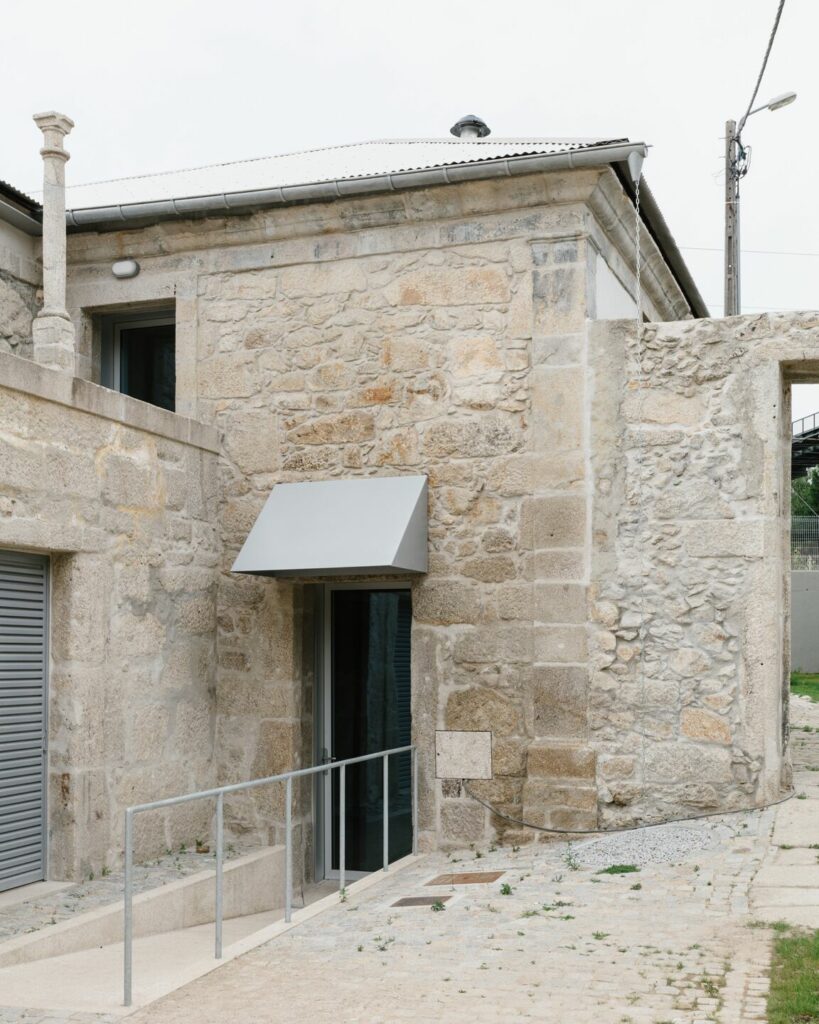
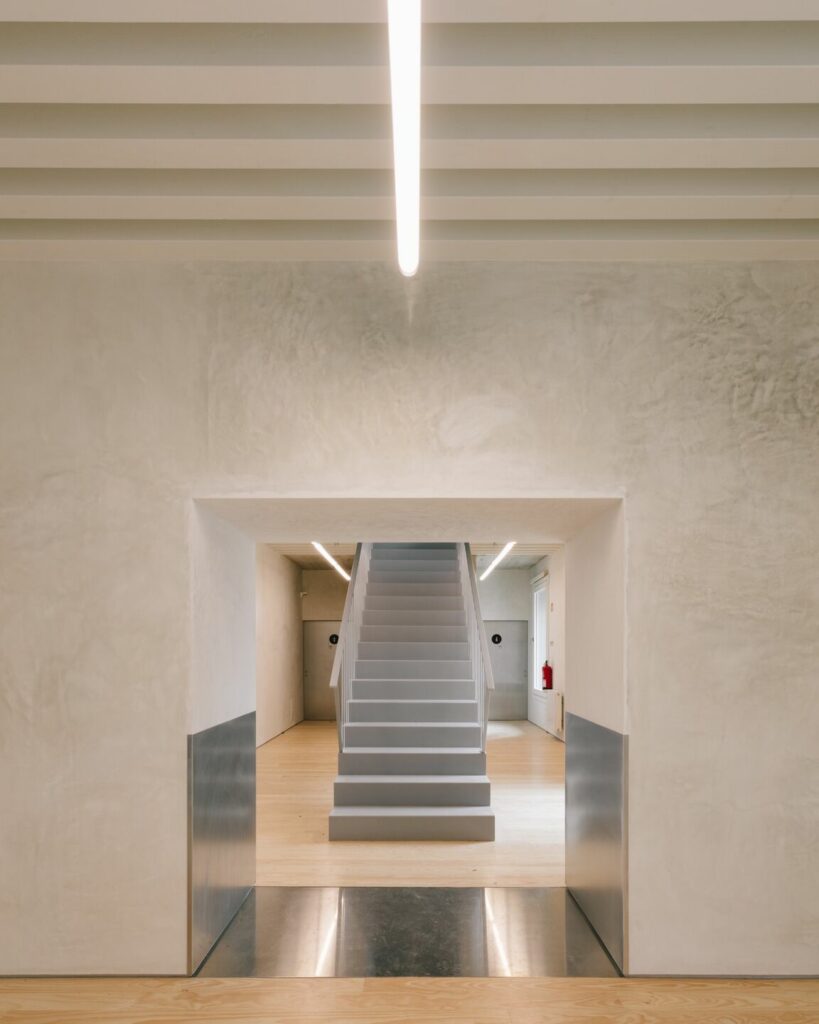
Nowadays the building appears, in its renewed scale and appearance, a prominent figure in the green mantle that extends throughout the naturalistic intervention of the TIC urban park. The abstraction and neutrality of the treatment of the roof and the new equipment give prominence to the only old elements that have been fully preserved over time: the stone walls.
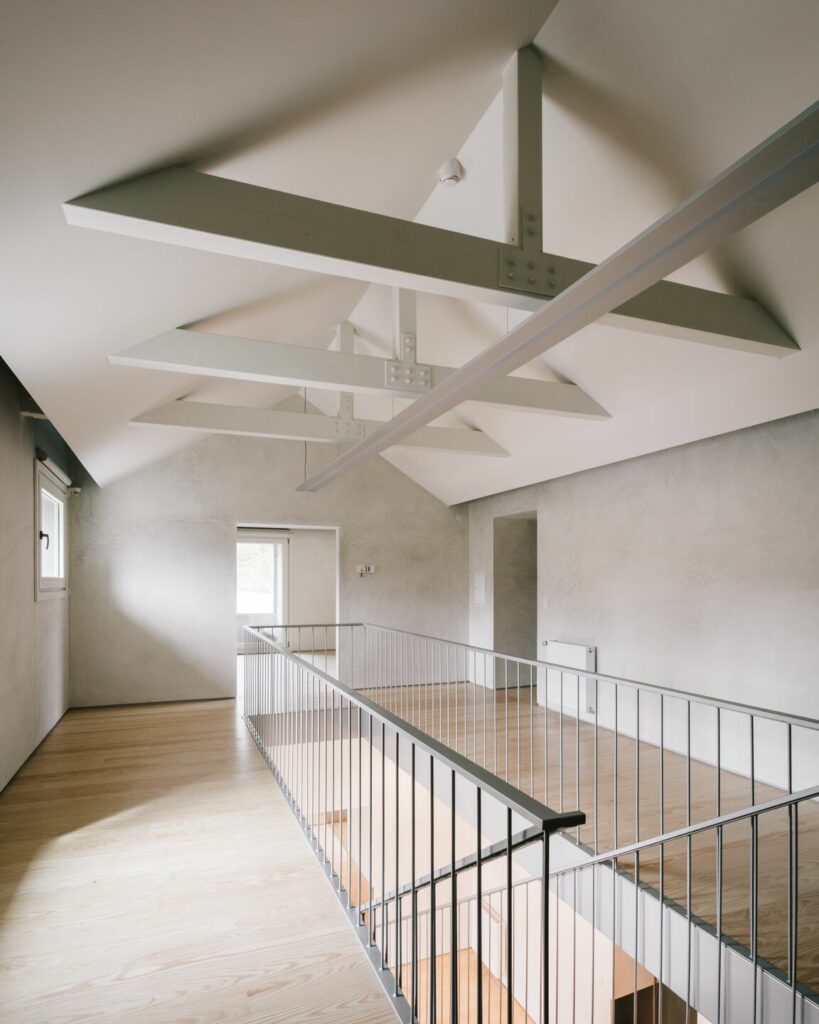

The chapel, given its spatial potential and symbolic dimension, was transformed into a small auditorium, lit zenithically through a glazed roof, which gives the space a charismatic monumentality.
